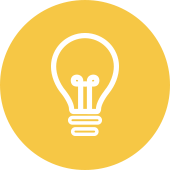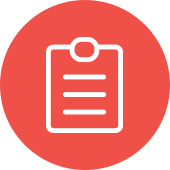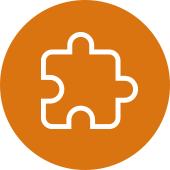Mga Spotlight
Tagadisenyo ng Instruksyon, Espesyalista sa Kurikulum, Tagadisenyo ng Pagkatuto, Tagabuo ng Programa sa Edukasyon, Espesyalista sa mga Sistema ng Instruksyon, Espesyalista sa Pagsasanay at Pagpapaunlad, Tagadisenyo ng Kurso, Tagaplano ng Programa sa Akademiko, Tagadisenyo ng Karanasan sa Pagkatuto, Konsultant sa Edukasyon
Ang bawat matagumpay na silid-aralan, programa sa pagsasanay, o online na kurso ay nagsisimula sa isang mahalagang sangkap— kurikulum !
Mula sa mga paaralang K–12 hanggang sa mga unibersidad, mga departamento ng pagsasanay sa korporasyon, at mga organisasyong hindi pangkalakal, kailangang may magdisenyo ng roadmap para sa pagkatuto. Diyan pumapasok ang mga Tagabuo ng Kurikulum.
Ang mga propesyonal na ito ay lumilikha, nag-oorganisa, at sumusuri ng mga kagamitang panturo at programa. Iniaayon nila ang mga aralin sa mga pamantayan ng pagkatuto, pumipili ng mga angkop na mapagkukunan ng pagtuturo, at bumubuo ng mga pagtatasa upang masukat ang pag-unawa ng mga mag-aaral. Sa digital na panahon ngayon, marami rin ang nagdidisenyo ng mga e-learning module, mga interactive na aktibidad, at mga solusyon sa blended learning.
Ang mga Tagabuo ng Kurikulum ay kadalasang nakikipagtulungan sa mga guro, propesor, eksperto sa paksa, at mga administrador upang matiyak na ang nilalaman ay nakakaengganyo, epektibo, at naa-access ng lahat ng mga mag-aaral. Maaari rin nilang suriin ang datos ng pagsusulit at feedback upang baguhin ang kurikulum sa paglipas ng panahon upang manatili itong may kaugnayan at epektibo.
Ito man ay pagdidisenyo ng programa sa matematika para sa elementarya, pagbuo ng online na pagsasanay para sa isang kumpanya ng pangangalagang pangkalusugan, o pagbuo ng mga modyul sa propesyonal na pag-unlad para sa mga guro, hinuhubog ng mga Curriculum Developer ang paraan ng pagkatuto at paglaki ng mga tao.
- Paglikha ng mga karanasan sa pagkatuto na direktang nakakaapekto sa tagumpay ng mga mag-aaral
- Pagsasama ng pagkamalikhain at pananaliksik upang magdisenyo ng nakakaengganyong nilalaman
- Mga pagkakataong magtrabaho sa K–12, mas mataas na edukasyon, pagsasanay sa korporasyon, at mga sektor na hindi pangkalakal
- Pakikipagtulungan sa mga tagapagturo at mga eksperto sa asignatura upang mapabuti ang pagtuturo
- Nananatiling napapanahon sa mga inobasyon sa mga pamamaraan ng pagtuturo at teknolohiyang pang-edukasyon
Iskedyul ng Paggawa
Karamihan sa mga Curriculum Developer ay nagtatrabaho nang full-time, kadalasan tuwing mga karaniwang araw, bagama't maaaring kailanganin nilang matugunan ang mga deadline na nangangailangan ng dagdag na oras. Kadalasan, kasama sa kanilang iskedyul ang pinaghalong mga gawain sa mesa—tulad ng pagsasaliksik ng mga pamantayan, mga materyales sa pagsusulat, o pagsusuri ng datos ng pagsusulit—at mga pagpupulong kasama ang mga guro, eksperto sa asignatura, o mga administrador. Sa mga korporasyon o hindi pangkalakal na setting, maaari silang maglakbay paminsan-minsan upang bisitahin ang mga lugar ng pagsasanay o mga paaralan.
Karaniwang mga Tungkulin
- Magsaliksik ng mga pamantayan sa pagkatuto at mga kinakailangan sa industriya upang iayon ang kurikulum sa mga inaasahan
- Magdisenyo ng mga plano ng aralin, mga modyul ng pagsasanay, at mga pagtatasa na tumutugma sa mga pangangailangan ng mag-aaral o nagsasanay
- Pumili at magrekomenda ng mga aklat-aralin, mga digital na kagamitan, at iba pang mga mapagkukunang pampagtuturo
- Gumawa ng mga aktibidad sa online learning at mga kurso sa e-learning para sa mga digital platform
- Suriin ang datos ng pagganap at feedback ng mga mag-aaral upang pinuhin at mapabuti ang kurikulum
- Makipagtulungan sa mga guro, administrador, at mga eksperto sa paksa upang matiyak ang katumpakan at pagiging epektibo
- Sanayin ang mga instruktor kung paano ipatupad ang mga bagong programa o kagamitan
Manatiling napapanahon sa mga uso sa edukasyon, mga pamamaraan ng pagtuturo, at mga kagamitan sa teknolohiya
Mga Karagdagang Responsibilidad
- Tiyaking natutugunan ng kurikulum ang mga kinakailangan sa akreditasyon o edukasyon ng estado
- Bumuo ng espesyalisadong kurikulum para sa magkakaibang mag-aaral, kabilang ang mga mag-aaral ng wikang Ingles o mga mag-aaral na may mga kapansanan
- Magtrabaho sa mga proyektong pinopondohan ng grant na nagpapalawak o nagpapabuti sa mga programa
- Suportahan ang mga workshop sa propesyonal na pag-unlad para sa mga guro at tagapagsanay
Maaaring simulan ng isang Curriculum Developer ang umaga sa pamamagitan ng pagrepaso sa mga pamantayan ng estado o mga kinakailangan sa pagsasanay para sa mga manggagawa. Maaaring kasama sa kalagitnaan ng umaga ang pagsulat ng mga bagong plano ng aralin o pag-update ng isang online learning module. Pagkatapos ng tanghalian, maaari silang makipagkita sa isang grupo ng mga guro upang talakayin kung paano umaangkop ang bagong kurikulum sa kanilang mga silid-aralan o mangalap ng feedback mula sa isang pilot program. Maaaring magtapos ang araw sa pagsusuri ng datos ng pagsusulit o pagrerebisa ng mga materyales batay sa mga mungkahi ng guro.
Mga Malambot na Kasanayan
- Pagkamalikhain sa pagdidisenyo ng mga nakakaengganyong aktibidad sa pagkatuto
- Malakas na kasanayan sa komunikasyon at pagsusulat
- Pakikipagtulungan at pagtutulungan kasama ang mga guro, eksperto, at administrador
- Analitikal na pag-iisip upang suriin ang datos at mga resulta
- Kakayahang umangkop kapag binabago ang kurikulum upang matugunan ang mga bagong pamantayan o teknolohiya
- Pasensya at empatiya sa mga hamong kinakaharap ng mga tagapagturo
Mga Kasanayang Teknikal
- Kaalaman sa mga modelo ng disenyo ng pagtuturo (tulad ng ADDIE o Bloom's Taxonomy)
- Pamilyar sa mga learning management system (LMS) tulad ng Canvas, Blackboard, o Moodle
- Kakayahang magdisenyo ng e-learning at mga interactive na module gamit ang software tulad ng Articulate o Captivate
- Pag-unawa sa mga estratehiya sa pagtatasa at pagsusuri ng datos
- Mga kasanayan sa pananaliksik para sa pag-ayon ng kurikulum sa mga pamantayan ng akademiko o manggagawa
- Kaalaman sa mga pamantayan ng aksesibilidad at inklusibong disenyo ng pagtuturo
- Espesyalista sa Kurikulum ng K–12 – Nakatuon sa mga asignaturang pampaaralan tulad ng matematika, agham, o pagbasa.
- Tagadisenyo ng Instruksyon – Gumagawa ng mga materyales sa pagsasanay para sa mga kumpanya, mga non-profit na organisasyon, o mga ahensya ng gobyerno.
- Tagabuo ng Kurikulum ng Mas Mataas na Edukasyon – Nagdidisenyo ng mga kurso, major, o mga online na programa para sa mga kolehiyo at unibersidad.
- Tagapagsanay sa Korporasyon – Gumagawa ng mga modyul sa pagsasanay para sa mga empleyado sa mga industriya tulad ng pangangalagang pangkalusugan, pananalapi, o teknolohiya.
- E-Learning Designer – Espesyalista sa paglikha ng mga online na kurso, simulation, at mga digital na tool sa pag-aaral.
- Mga pampubliko at pribadong paaralan
- Mga kolehiyo at unibersidad
- Mga departamento ng pagsasanay sa korporasyon
- Mga ahensya ng gobyerno at hindi pangkalakal
- Mga kompanya ng paglalathala ng edukasyon
- Mga tagapagbigay ng online na pag-aaral
Binabalanse ng mga Tagabuo ng Kurikulum ang pagkamalikhain at pagiging praktikal. Kailangan nilang mag-isip na parang mga guro at mag-aaral, na lumilikha ng mga aralin na nakakaengganyo habang natutugunan pa rin ang mahigpit na mga pamantayan. Maaaring maging mahigpit ang mga deadline, lalo na kapag ang mga paaralan o kumpanya ay naglulunsad ng mga bagong programa. Ang trabaho ay kadalasang nangangailangan ng pagrerebisa at pag-edit nang maraming beses bago maging handa ang isang programa. Bagama't maaari itong maging mahirap, ang gantimpala ay ang makita kung paano nakakatulong ang isang mahusay na dinisenyong kurikulum sa mga mag-aaral na magtagumpay.
- Paglawak ng digital na pagkatuto – Parami nang paraming paaralan at kumpanya ang patungo sa online, blended, at interactive na pagkatuto.
- Personalized na pagkatuto – Ang mga kurikulum ay lalong idinisenyo upang umangkop sa iba't ibang pangangailangan at bilis ng pagkatuto ng mga mag-aaral.
- Pagtuturong batay sa datos – Ginagamit ng mga developer ang datos ng pagtatasa upang pinuhin ang mga aralin at matukoy ang mga kakulangan sa pagkatuto ng mga mag-aaral.
- Pagkakapantay-pantay at pagsasama – Pagbibigay-diin sa pagdisenyo ng kurikulum na may kaugnayan sa kultura at naa-access sa lahat ng mag-aaral.
- Paghahanay ng Lakas-Paggawa – Lumalaking pangangailangan para sa mga kurikulum na nakatuon sa karera na naghahanda sa mga mag-aaral na may mga kasanayang handa sa trabaho.
Madalas na mahilig matuto at magturo ang mga Tagabuo ng Kurikulum mula pa noong bata pa sila. Maaaring nasiyahan na sila sa pagtuturo sa mga kaklase, paggawa ng mga gabay sa pag-aaral, o pag-oorganisa ng mga proyekto ng grupo. Ang ilan ay nasiyahan sa pagdidisenyo ng mga laro o aktibidad na nagpapasaya sa pag-aaral. Madalas silang may likas na pagkamalikhain—pagsulat ng mga kuwento, pagdidisenyo ng mga proyekto, o pag-eeksperimento sa teknolohiya—at ipinapares ito sa interes sa pagtulong sa iba na magtagumpay. Kadalasan sila ang mga nasisiyahan sa parehong akademiko at pakikipagtulungan, na nakakahanap ng kasiyahan sa pagpapadali ng mga kumplikadong ideya na maunawaan ng iba.
- Bachelor's degree sa edukasyon, disenyo ng pagtuturo, kurikulum at pagtuturo, sikolohiyang pang-edukasyon, o espesyalisasyon sa isang asignaturang sakop (hal., matematika, agham, Ingles).
- Mas gusto ng maraming employer ang Master's degree sa kurikulum at pagtuturo, disenyo ng pagtuturo, o teknolohiyang pang-edukasyon.
- Kadalasang kinakailangan ang naunang karanasan sa pagtuturo o pagsasanay upang maunawaan ang mga dinamika sa silid-aralan at mga pangangailangan ng mag-aaral.
- Kaalaman sa mga modelo ng disenyo ng pagtuturo (hal., ADDIE, Bloom's Taxonomy, backward design) at teorya ng pagkatuto ng nasa hustong gulang.
- Pamilyar sa mga learning management system (LMS) tulad ng Canvas, Blackboard, o Moodle.
- Karanasan sa paggamit ng mga kagamitang pang-teknolohiya at mga plataporma ng e-learning (hal., Articulate, Captivate).
- Mahusay na kasanayan sa disenyo ng pagtatasa, pagsusuri ng datos, at ebalwasyon ng programa upang masukat ang bisa ng pagkatuto.
- Pag-unawa sa mga kasanayan sa pagkakaiba-iba, pagkakapantay-pantay, at pagsasama para sa pagbuo ng inklusibong kurikulum.
- Patuloy na propesyonal na pag-unlad sa disenyo ng pagtuturo, digital na pagkatuto, at patakaran sa edukasyon.
Mga Nakatutulong na Sertipikasyon
- Sertipiko sa Disenyo ng Pagtuturo (inaalok ng mga unibersidad at mga asosasyong propesyonal)
- Mga sertipikasyon ng Association for Talent Development (ATD) sa disenyo ng pagtuturo at pagpapaunlad ng pagkatuto
- Sertipikadong Propesyonal sa Pamamahala ng Pagsasanay (CPTM)
- Google Certified Educator o Microsoft Innovative Educator (para sa gawaing kurikulum na nakatuon sa teknolohiya)
- Kumuha ng mga klase sa edukasyon, sikolohiya, pagsusulat, at mga aplikasyon sa kompyuter
- Magboluntaryo bilang tutor, camp counselor, o mentor upang makakuha ng karanasan sa pagtuturo
- Sumali sa mga club kung saan maaari kang magsanay ng pamumuno at organisasyon, tulad ng student council o debate team
- Galugarin ang mga kagamitan sa teknolohiya ng edukasyon at mga platform ng online learning
- Tulungan ang mga guro o propesor sa pagpaplano ng aralin o mga proyekto sa pananaliksik
- Magsagawa ng mga internship sa mga organisasyon ng edukasyon, paglalathala, o pagsasanay
- Pag-aralan ang mga wikang banyaga o magkakaibang kultura upang maghanda para sa inklusibong disenyo ng kurikulum
- Maging komportable sa mga tool sa presentasyon tulad ng PowerPoint, Canva, o Google Slides
- Mahusay na kurso sa disenyo ng pagtuturo, teorya ng kurikulum, at sikolohiyang pang-edukasyon
- Mga pagkakataon para sa mga internship o practicum sa mga paaralan o mga organisasyon ng pagsasanay
- Mga guro na may totoong karanasan sa disenyo ng kurikulum at teknolohiya sa pagtuturo
- Pag-access sa software at mga platform na ginagamit sa e-learning at paglikha ng mga digital na kurso
- Mga programang nagbibigay-diin sa pagkakaiba-iba, pagsasama, at pagiging naa-access sa mga materyales sa pagtuturo
- Mga opsyon para sa online o part-time na pag-aaral para sa mga nagtatrabahong propesyonal
- Bisitahin ang career center ng iyong kolehiyo para sa tulong sa paggawa ng iyong resume, pagbuo ng portfolio, at pagsasanay sa mga panayam.
- Maghanap ng mga post ng trabaho sa EdJoin, HigherEdJobs, LinkedIn, ATD Job Bank, at Indeed
- I-highlight sa iyong resume ang mga keyword na hinahanap ng mga employer, tulad ng:
- Disenyo ng Pagtuturo
- Pagpapaunlad ng Kurikulum
- E-Learning
- Mga Sistema ng Pamamahala ng Pagkatuto (LMS)
- Disenyo ng Pagtatasa
- Teknolohiyang Pang-edukasyon
- Pagsasanay at Pagpapaunlad
- Pagsusuri ng Programa
- Gumawa ng portfolio ng mga plano ng aralin, halimbawang kurikulum, o mga digital na proyekto sa kurso upang ipakita ang iyong mga gawa
- Mag-apply para sa mga entry-level na posisyon tulad ng Instructional Assistant, Training Coordinator, o Junior Instructional Designer
- Magsanay sa mga tanong sa panayam tulad ng: “Paano ka nagdidisenyo ng kurikulum para sa iba't ibang istilo ng pagkatuto? ” o “ Anong mga hakbang ang iyong ginagawa upang masuri ang bisa ng isang kurso?”
- Sumali sa mga propesyonal na organisasyon tulad ng Association for Supervision and Curriculum Development (ASCD) o ng Association for Talent Development (ATD) para sa mga oportunidad sa networking
- Magdamit nang propesyonal at maging handang ipaliwanag ang iyong pagkamalikhain at ang iyong proseso sa paglutas ng problema
- Magkaroon ng karanasan sa silid-aralan o pagsasanay bago lumipat sa ganap na disenyo ng kurikulum
- Espesyalista sa isang larangang in-demand tulad ng STEM, pagsasanay sa pangangalagang pangkalusugan, o digital learning
- Kumuha ng master's degree o sertipikasyon sa disenyo ng instruksyon
- Tumanggap ng mga tungkulin sa pamumuno sa mga departamento ng edukasyon o pagsasanay
- Maglathala ng mga artikulo o magtanghal ng mga workshop tungkol sa mga estratehiya sa pagtuturo o disenyo ng pagtuturo
- Manatiling updated sa mga bagong teknolohiya at plataporma sa pag-aaral
- Magturo sa mga bagong tagapagturo o mga junior instructional designer
- Pagsulong sa mga tungkulin tulad ng Senior Instructional Designer, Curriculum Director, o Chief Learning Officer
Mga Website
- ASCD.org – Mga mapagkukunan para sa kurikulum at pamumuno sa pagtuturo
- ATD.org – Mga kagamitan sa karera ng Asosasyon para sa Pagpapaunlad ng Talento
- Edutopia.org – Mga makabagong estratehiya sa pagtuturo at pagkatuto
- Educause.edu – Mga uso sa teknolohiya sa edukasyon
- OLC (Online Learning Consortium) – Pinakamahuhusay na kasanayan sa online na pag-aaral
- ISTE.org (International Society for Technology in Education) – Mga pamantayan at mapagkukunan para sa digital na pagkatuto at pagsasama ng kurikulum
- LearningForward.org – Mga mapagkukunan para sa propesyonal na pag-aaral at pagpapaunlad ng kurikulum para sa mga tagapagturo
- InstructionalDesign.org – Libreng mapagkukunan na nagpapaliwanag ng mga modelo, teorya, at kasanayan sa disenyo ng pagtuturo
- AECT.org (Association for Educational Communications and Technology) – Pananaliksik at propesyonal na pag-unlad sa disenyo at teknolohiya sa pagtuturo
- EdWeek.org (Linggo ng Edukasyon) – Mga balita at pananaw sa patakaran at inobasyon ng kurikulum ng K–12
- SREB.org (Southern Regional Education Board) – Mga ulat at mapagkukunan tungkol sa pagpapabuti ng kurikulum at kahandaan sa kolehiyo/karera
Mga Libro
- Pag-unawa sa Disenyo nina Grant Wiggins at Jay McTighe
- Ang Sistematikong Disenyo ng Pagtuturo nina Walter Dick, Lou Carey, at James Carey
- Ang E-Learning at ang Agham ng Pagtuturo nina Ruth Colvin Clark at Richard Mayer
Tulad ng maraming karera sa edukasyon, ang larangan ng pagpapaunlad ng kurikulum ay nagbabago habang ang teknolohiya at mga kagamitang AI ay nagsisimulang i-automate ang ilang mga gawain sa pagpaplano ng aralin. Kabilang sa mga kaugnay na trabaho ang:
- Guro o Propesor
- Tagadisenyo ng Instruksyon
- Konsultant sa Edukasyon
- Tagapayo sa Akademiko
- Tagapagsanay ng Korporasyon
- Espesyalista sa Teknolohiyang Pang-edukasyon
- Tagapangasiwa ng Programang Hindi Pangkalakal
Balita

Mga Itinatampok na Trabaho

Mga Online na Kurso at Kagamitan








